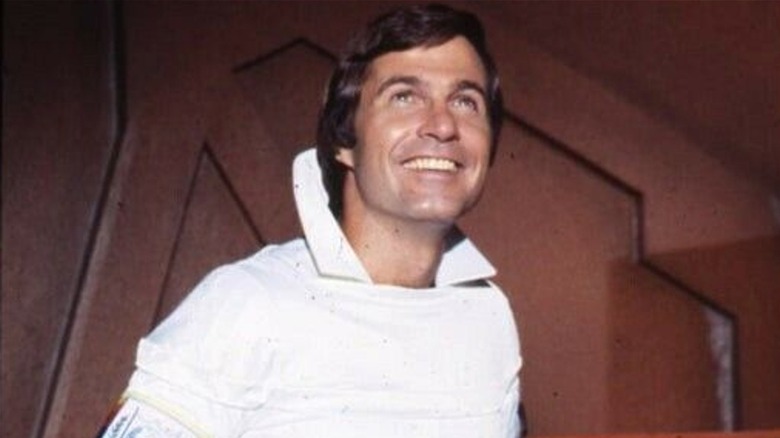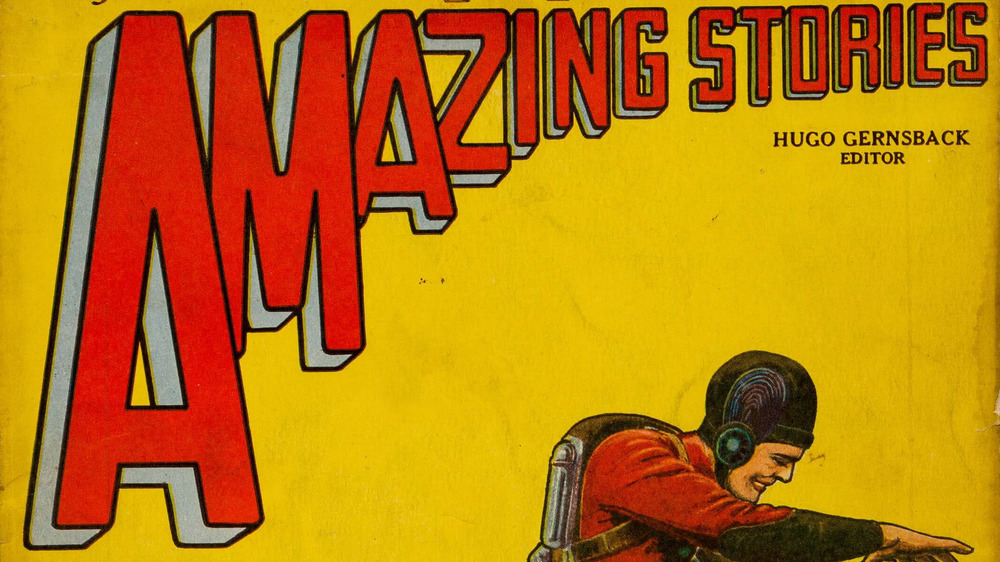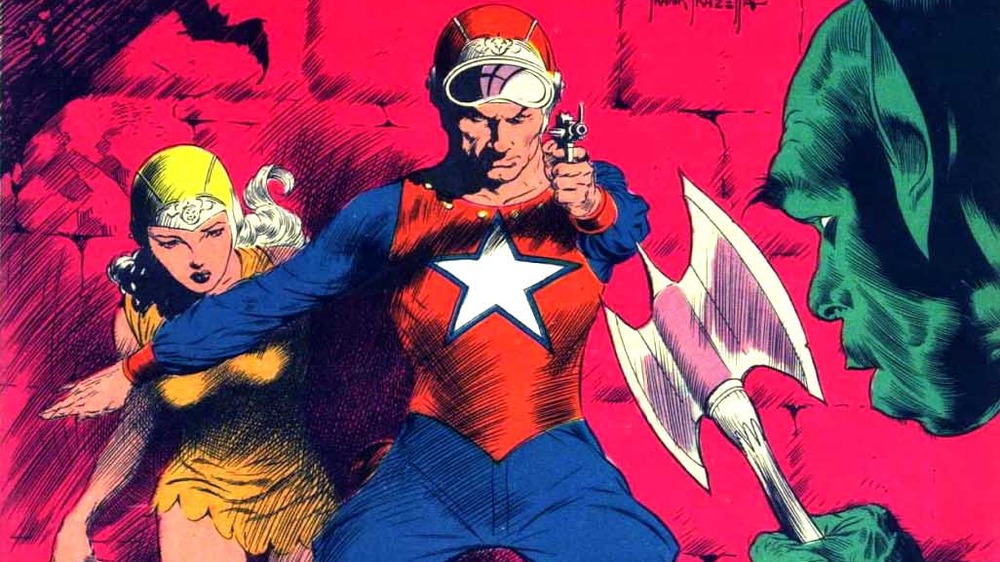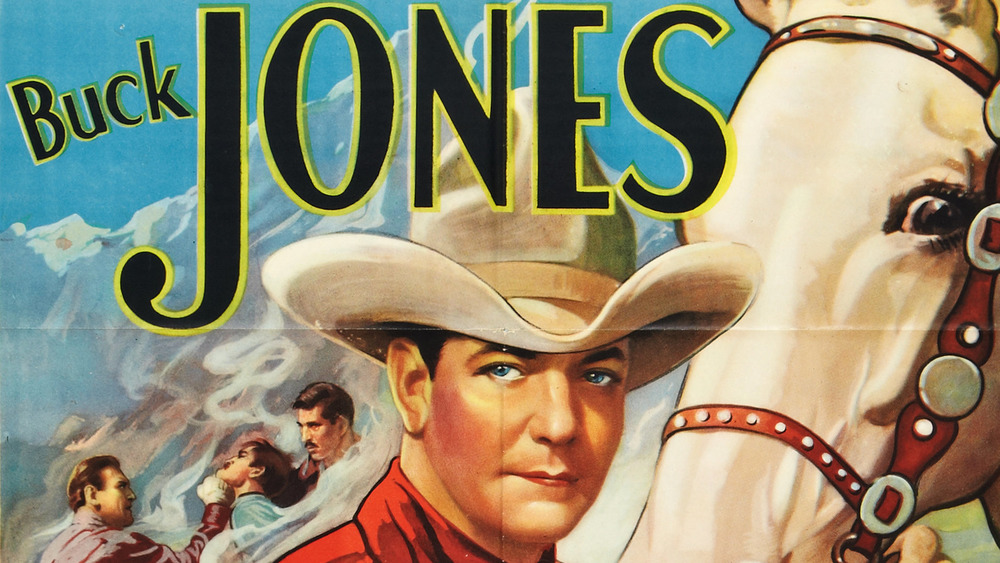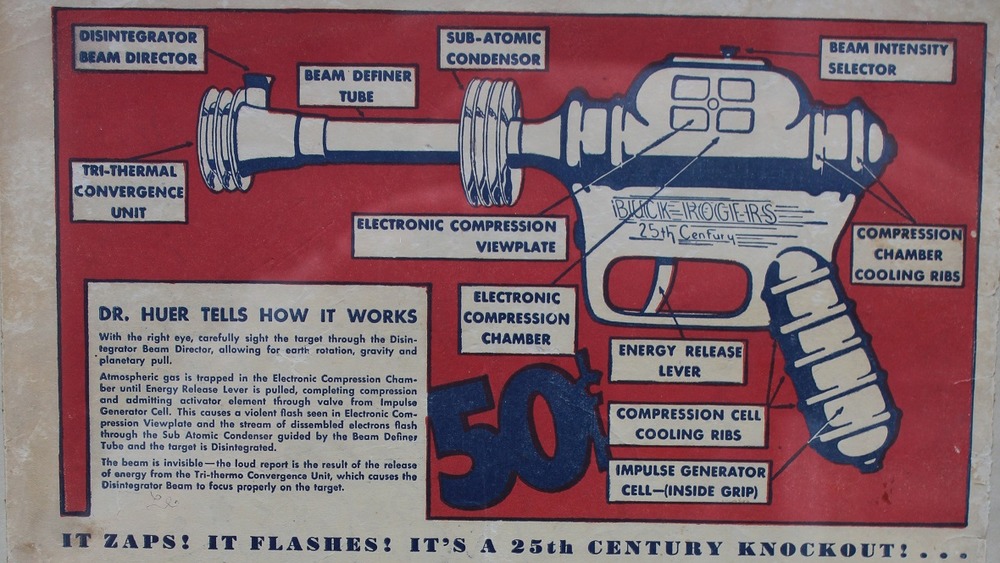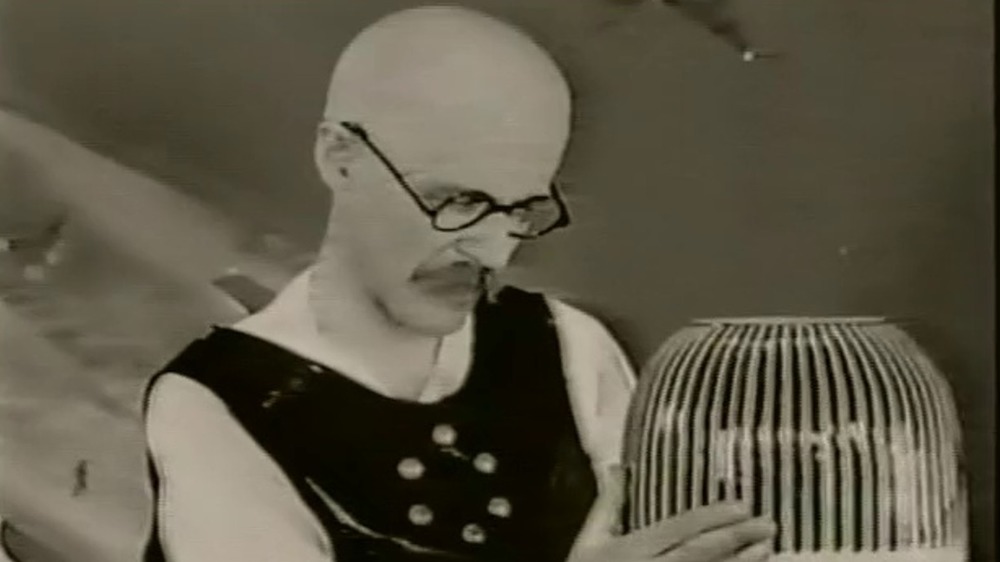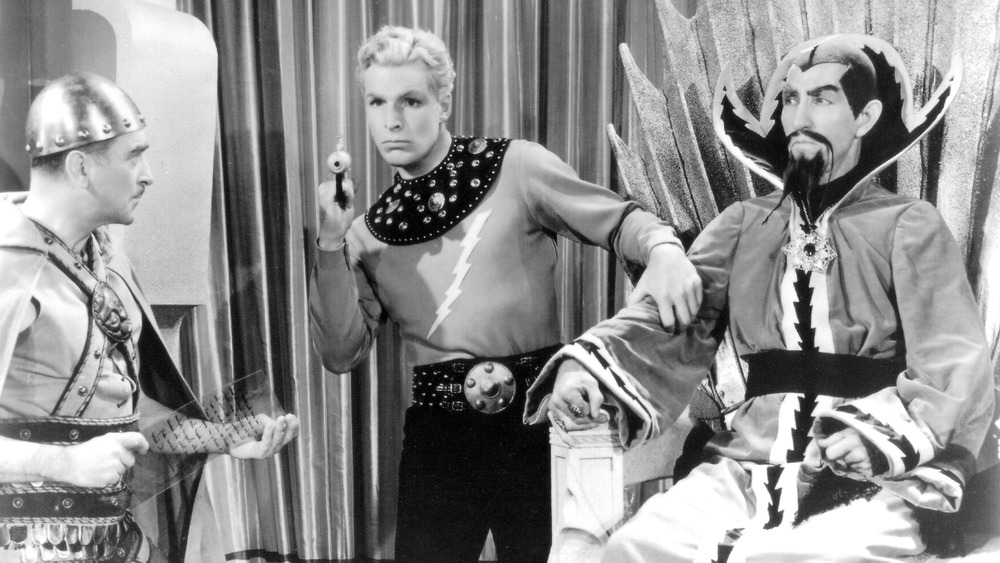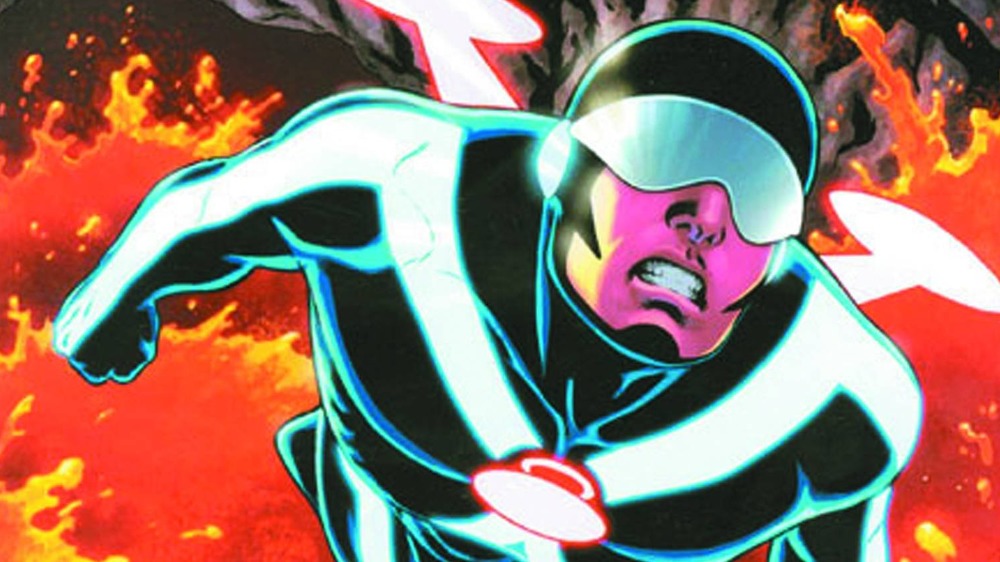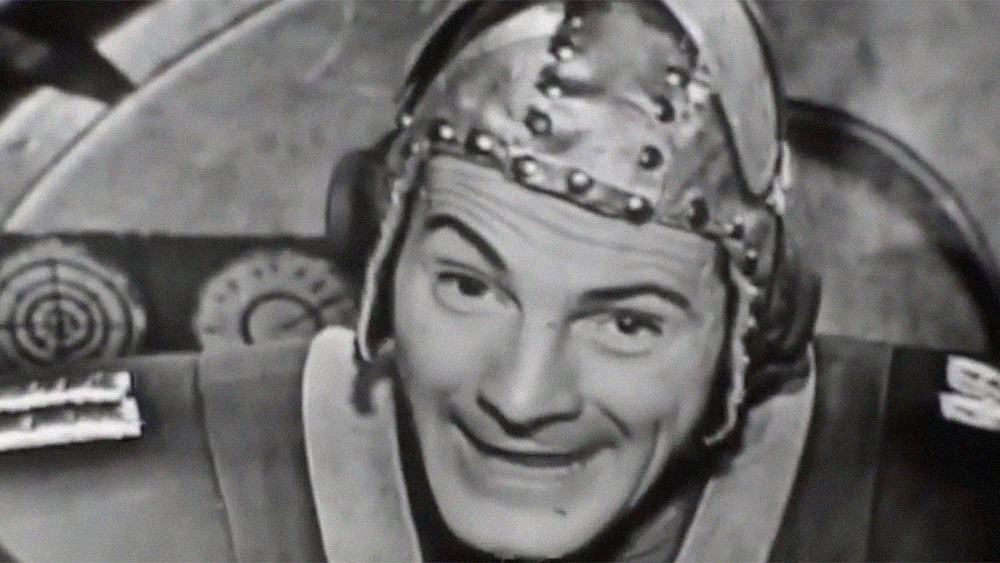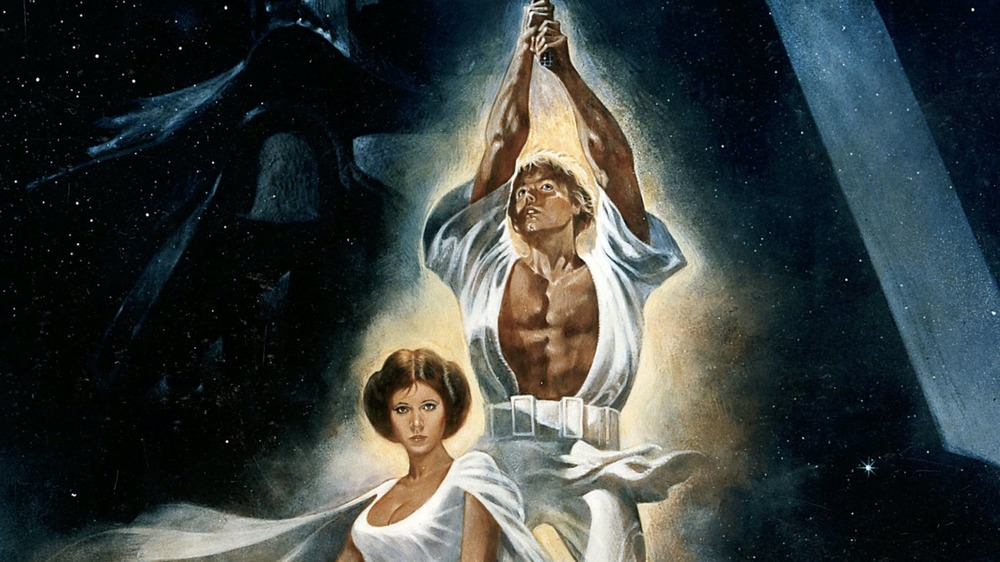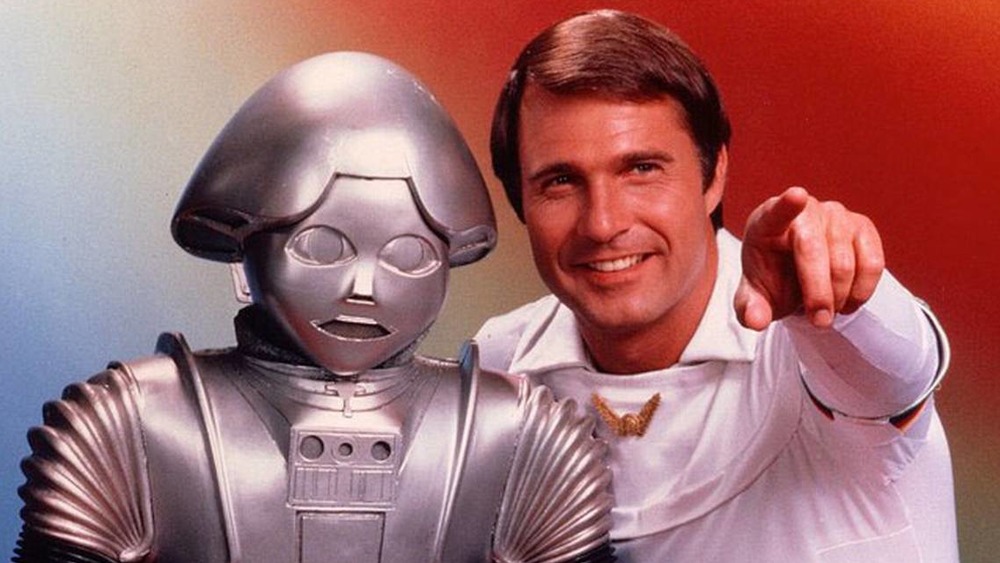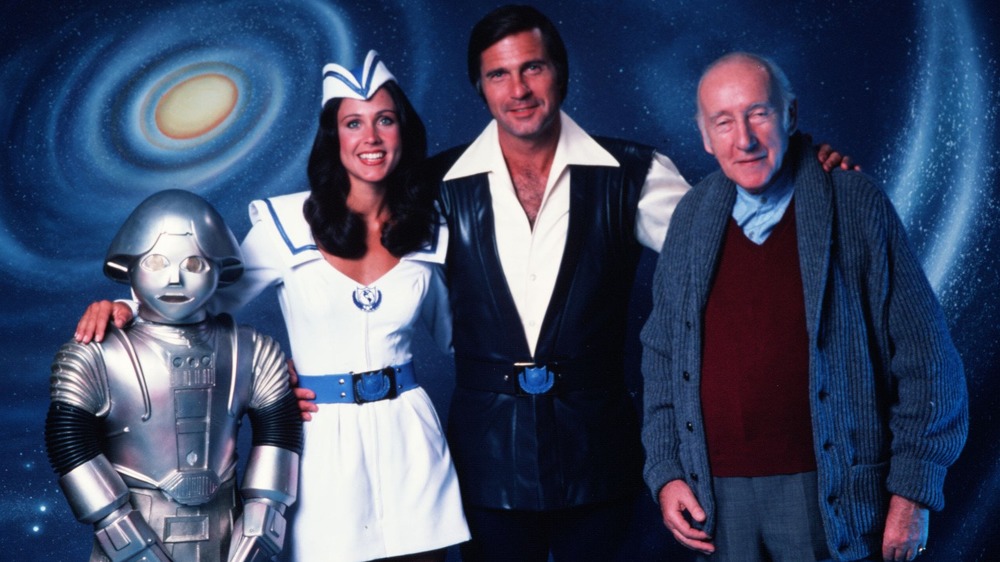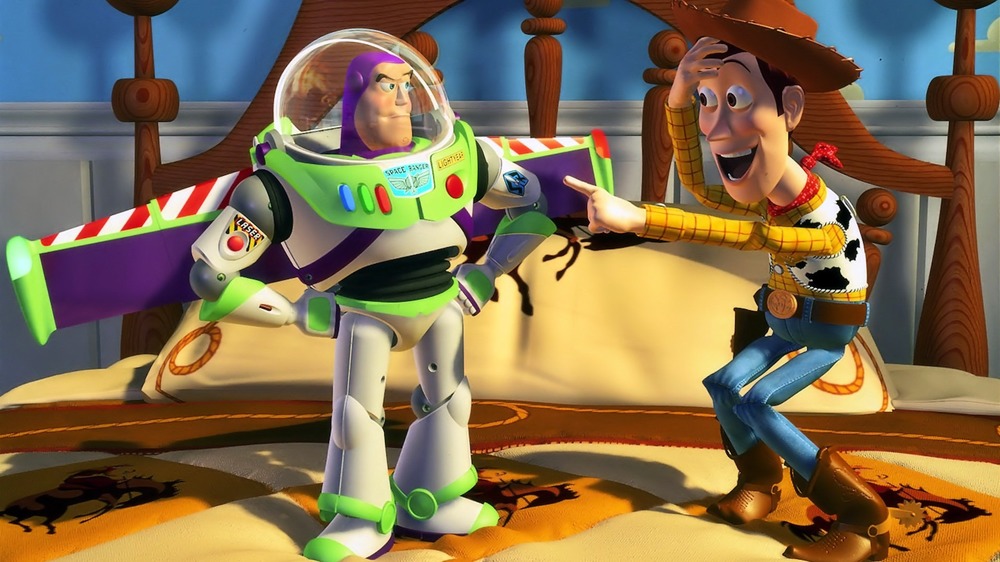The Untold Truth Of Buck Rogers
We may receive a commission on purchases made from links.
What, exactly, is the appeal of Buck Rogers, a fictional spaceman from 1928?
The short answer to these questions is that Buck Rogers is awesome. Fantasy and sci-fi fandom currently dominates the mainstream, and no fan's knowledge of the genre can be complete without an acknowledgement of Buck Rogers as the granddaddy of all popular space heroes. From his earliest imitator, Flash Gordon, to his later successors like Captain Kirk, Han Solo, Buzz Lightyear, and beyond, he's a major origin point. Beyond his legacy, Buck Rogers is also simply cool, even today. This is his untold story, from his must-have toys to his fascinating future.
From pulp fiction to the mainstream
In the early 1900s — before the internet, movies, TV, and even most radio — genre-loving folks got their science fiction and fantasy fixes from pulp magazines like Amazing Stories and Air Wonder Stories. Those super-old-school fans were geeking out over the two-fisted heroics of Tarzan and John Carter of Mars, who took their readers to the far-off fantasylands of the lawless jungle, the wilds of outer space, and even further beyond.
Buck Rogers, originally named Anthony Rogers, first appeared in a 1928 issue of Amazing Stories as the star of Armageddon 2419 A.D., a novella by Philip Francis Nowlan. The following year, Nowlan was hired to expand the story into a comic strip serial entitled Buck Rogers by the John F. Dille Company, a syndication service providing comic strips and other content to local newspapers. With that nationwide exposure, Buck Rogers fever swept popular culture, introducing science fiction to a mainstream audience in a whole new way, and creating an important progenitor for the modern superhero.
An early superhero in an early dystopia
The original Buck Rogers series follows a man named William Rogers, who is a World War I veteran working as a mine inspector. A combination of a cave-in and exposure to weird chemicals leaves Rogers in a state of suspended animation for 492 years. He awakens in the future, where he is paraded around for public relations purposes. He soon learns that the leadership is lying to him, and he is drawn into a civil war. Sounds like a certain Marvel super-soldier, doesn't it? Buck Rogers' influence on the superheroes that dominate modern pop culture is just that obvious.
America in Buck Rogers' 2419 is dominated by an economically and technologically privileged upper-class called the "Hans," who rule the 15 remaining cities with fleets of deadly airships. The poor and disenfranchised are left behind in the barbaric wilds of what was once rural America. Buck Rogers' heroics against the "airlords" unite the lower classes against the oligarchy in a way that prefigures modern dystopian sci-fi: Everything from The Hunger Games to The Walking Dead owes a debt to these dark visions of the future.
His forgotten namesake
For unknown reasons, when Philip Francis Nowlan helped adapt his own story to comic strip form, he retroactively changed his hero's name from "Anthony Rogers" to "William Rogers." Perhaps Nowlan, or his publisher, John Dille, wanted the name to remind audiences of the everyman humorist Will Rogers, who was one of the most popular public figures of the day. Nowlan also gave his hero a snappy new nickname: The monosyllabic, instantly memorable "Buck."
The origin of this nickname is actually well documented: One of the most popular movie stars of the 1920s and 30s was Charles "Buck" Jones, who was known for playing heroic cowboys in silent era Westerns. By giving Rogers the nickname "Buck," Nowlan and Dille were assuring their audiences, many of whom were new to the strange imagery and ideas of science fiction, that their hero was still of the familiar two-fisted he-man variety.
Buck Rogers, master of merchandise
In 1932, just three years after making the leap from pulp magazines to comic strips, Buck Rogers in the 25th Century became one of the first science fiction programs on the radio. Originally broadcast under the title The World in 2432, this program debuted episodes of 15 to 30 minutes, depending on the year of broadcast. The series ran until 1947, introducing a generation to the sci-fi genre ... and to a brand new world of product tie-ins.
Department stores dedicated massive amounts of floorspace to Buck Rogers merchandise, complete with costumed salespeople. Over the next decade, toy guns, model rockets, space helmets and practically every other product that could bear the Buck Rogers logo hit store shelves. The Buck Rogers XZ-31 Rocket Pistol, an art deco beauty manufactured by the Daisy Manufacturing Company, was the must-have Christmas gift of 1934. The day it hit shelves, lines of eager customers stretched across city blocks to enter Macy's "World of Tomorrow" exhibit and get their hands on the coveted toy.
It happened at the World's Fair
In 1934, the John F. Dille Company decided to produce a short feature to promote the growing Buck Rogers brand on the biggest public stage of the day: The 1933 Chicago World's Fair, officiously christened the Century of Progress International Exhibition. This marketing idea may have been brilliant, but the John F. Dille Company lacked either the faith or the funds to deliver a film adaptation worthy of their character. Buck Rogers in the 25th Century, which boasts the totally awesome and super-explanatory subtitle, An Interplanetary Battle with the Tiger Men of Mars, is spectacularly amateurish in every imaginable way, from the wooden performance by Dille's own non-actor son as Buck, to the special effects, courtesy of repurposed Buck Rogers toys. But as this film was screened in the Enchanted Island playground area, perhaps the shoddy craftsmanship didn't matter. It's easy to imagine that the little ones of 1933 were just delighted to see their hero in motion.
Only one man can save Buck Rogers ... Flash Gordon!
In 1939, Universal Studios produced a 12-part Buck Rogers serial starring two-time Olympic gold medalist Larry "Buster" Crabbe as Buck. Crabbe had already put his charisma and swimmer's physique to good use in Hollywood, starring as Flash Gordon in that character's own Universal serial. Universal, thinking like a studio, repeated their successful formula with little reinvention and even less of a budget in Buck Rogers, even re-using the distinctive studded belt Crabbe wears in Flash Gordon's Trip to Mars.
Thus began a long, strange trip for the Buck Rogers serial — and Crabbe's place within it. In 1953, Goodwill Pictures recut the Buck Rogers serial into a feature entitled Planet Outlaws. The footage was recut again in 1966 to create a TV movie, Destination Saturn. Finally, in 1977, a third feature, simply titled Buck Rogers, was once again edited from the same footage, to take advantage of interest in the material renewed by Star Wars and the new Buck Rogers in the 25th Century TV series. An early episode of the first season of the latter series, entitled "Planet of the Slave Girls," features an appearance by none other than Buster Crabbe as Brigadier Gordon.
A comic book hero who predates comic books
Long before they became respected as "graphic novels," comic books didn't even tell original stories. Instead, the earliest comic books were reprinted collections of newspaper comic strips. 1933's Famous Funnies: A Carnival of Comics is one such anthology of strips, and considered by most historians to be the first true American comic book. Buck Rogers comic strips were collected and reprinted in this new form almost immediately, spawning a series of "Big Little Book" collections.
Starting in 1940, Famous Funnies began running reprints of Buck Rogers in the 25th Century as a regular feature. In 1969, when those same comic strips were collected into a scholarly hardback with a foreword by Ray Bradbury, Buck Rogers was re-discovered by a new generation of fans, who were now beginning to view comic books as their own art form. Buck Rogers' adventures, both new and old, have made their way into comics repeatedly ever since, most recently with Dynamite Comics' retelling of Buck's story in 2012.
A Buck Rogers TV show! No, not that one!
In 1950, Buck Rogers made a daring leap into television, a futuristic technology if ever there was one. Unfortunately, just as Buck Rogers was beaten to the big screen by his imitator, Flash Gordon, so too was he beaten to the small screen by the DuMont Network's 1949 production, Captain Video and his Video Rangers, which takes the honor of being the first weekly science fiction television series.
Already late to the party, ABC's Buck Rogers was plagued by other issues that would spell its doom. These factors included stiff competition from the era's biggest star, Milton Berle, and the misfortune of having to recast the role of Buck not once, but twice during its one and only season. With the re-edited Universal serial starring Buster Crabbe already playing on television — and looking better, despite being over a decade old — this new television series was canceled and quickly forgotten.
Inspiring other wars in the stars
Filmmaker George Lucas has frequently cited the Universal Flash Gordon and Buck Rogers serials as inspirations for Star Wars. In fact, before he wrote the screenplay for Star Wars, Lucas attempted to acquire the rights to adapt the Flash Gordon comic strips. Fortunately for everyone, Lucas failed in that attempt.
Yet the echoes of those pulp stories live on in Star Wars. Consider Star Wars' infamous "Style A" poster. Beyond its now-common images of space ships dogfighting in the stars and pistol-packing space princesses, it borrows many stylistic elements from those long-ago adventure serials. Just look at how brawny Luke is, and how much Leia resembles a slinky '30s femme fatale, complete with a low-cut dress she never sports in the movie. Moreover, many visuals that are now considered integral to the vocabulary of Star Wars come straight from Buck Rogers. This includes the use of "wipes" to transition from one scene to another, and even the iconic opening text crawl, which was first used in the 1939 Buck Rogers serial.
A Buck Rogers TV show! Again!
Just as George Lucas was inspired by Buck Rogers, the success of Lucas' 1977 blockbuster Star Wars inspired a legion of imitators ... including a reboot of Buck Rogers. In 1979, NBC produced Buck Rogers in the 25th Century, starring Gil Gerard and Erin Gray. This version reimagines Buck Rogers as an astronaut revived centuries too late from suspended animation, and introduces new characters, including the robot sidekick Twiki, voiced by cartoon legend Mel Blanc. Coincidentally, Blanc also voiced Daffy Duck in the Looney Tunes Buck Rogers parody, Duck Dodgers in the 24th 1/2 Century.
The feature-length Buck Rogers pilot was given a limited theatrical release, much as the producer, Glen A. Larson, had done successfully with Battlestar Galactica. But Buck Rogers' budget and quality never matched its sibling show. Frequently, sets and costumes from Battlestar Galactica were recycled for Buck Rogers. Even the designs for Rogers' Thunder Fighters were actually just the original designs for Battlestar Galactica's Colonial Vipers.
Buck Rogers' untimely end
Fans amped up by Star Wars and Battlestar Galactica were clamoring for another weekly science fiction series, and were thus willing to overlook the low budget effects of Buck Rogers in the 25th Century's first season. But the second season left everyone — including star Gil Gerard — a little cold. New directives from NBC pushed more comedy and family-friendly adventure into the scripts, and the producers, in an attempt to replicate the success of space-focused series like Star Trek, moved Buck's story from the futuristic world of New Chicago to a wandering starship called the Searcher.
Gerard felt that the series had strayed too far from its original premise, and his protests soured the mood at the network. "It was such a ripoff of Star Trek and Battlestar Galactica," Gerard said, "I was thinking, 'Why are we doing this?' I always wanted Buck to stay on Earth, but we got a new executive producer who had no respect for the audience and the show." Thus, the show dwindled into nothingness, its last episode airing in 1981.
A legacy ... and beyond!
When Buck Rogers first zoomed onto the scene back in 1928, he displaced the cowboys, longtime heroes of American youth. Almost overnight, a fascination with space ships and ray guns swept America's kids. Cowboy heroes would persist through the 1950s, thanks to TV series like The Lone Ranger and The Roy Rogers Show, but they still had to share space with Buck Rogers and his growing legion of imitators. As the era of space travel and the race to the moon dawned, the battle between the Western hero and the science fiction hero for dominance of American popular culture was finally won by the men from beyond the stars.
Westerns layered on moral ambiguity and grew increasingly dark. Though this has yielded many artistically superior movies, the commercial successes of the day still largely belong to sci-fi. This conflict — the displacement of the cowboy by the spaceman — is so ingrained in American popular culture that it is essentially the plot of Toy Story, with Buzz Lightyear standing in for Buck Rogers and his ilk.
